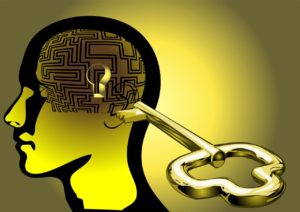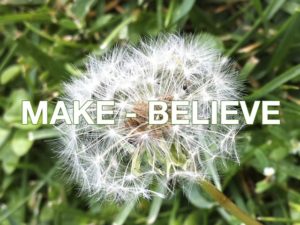Can we become more creative?
The moment you doubt whether you can fly, you cease forever to be able to do it.
— J. M. Barrie
What makes us creative? Creativity is an inside job. To be more creative, we need to understand the source of and psychology of creating. In some ways, creativity can be likened to a muscle mass—it needs to be exercised and strengthened so that it does not decrease with age or remain dormant.
Just as we use willpower to exercise to build muscle, we can also consciously decide to build the skills that prevent the decline of creativity. While I agree with J. M. Barrie’s attributing doubt to losing our ability to fly, a metaphor for creativity and doubt. I believe we can learn to overcome doubt and get back our ability to fly.
Creativity can be viewed as a form of power that includes a process by which, according the the original meaning, we can “make, bring forth, produce, beget” . Most people think that creativity is a genetically determined trait, just like intelligence, but new research is proving that incorrect. Anything your create is creative.
The capacity to be creative is hardwired into each person’s brain. According to Johan Lehrer, in his book Imagine, the mind “has the creative impulse built into its operating system.” We are all born creative; the extent to which we can use the power of our innate creativity throughout life depends on each of us.
Understanding the source of creativity and how to access it helps us write but also help us solve daily problems, attain our true potential and can be used for the greater good of all.
Unlocking our creative potential reminds me of the teachings of Yoda, the master teacher of Jedi warriors in Star Wars. One of the skills Yoda taught his pupil, Luke Skywalker, was how to harness what he called the power of the Force.
Creativity is a lot like the Force and, in some ways, we are like Jedi in training, learning how to harness that power. But first we must liberate ourselves from the power of the dark side of the culture and our internal critic that tries to squash our creative drive. We need to tame the brutal inner critic who stalks us, keeping us from getting started or finishing. Then we can make way for our creative side to shine. Let’s start by looking at the real power behind creativity—the imagination.
What Is the Imagination?
Significant problems cannot be solved at the same level of the thinking which created them.
— Albert Einstein
In its most simple form, the imagination creates images, dreams and ultimately, anything we want to generate in the material realm. With imagination, we see through our “mind’s eye” making sense of things that we see with our outer eyes. Some say it grants us freedom because it allows us to see or conceive of something in the world that may not yet exist in the outer world. The imagination is real, make ourselves believe its real.
The imagination is the medium from which creativity emerges. To a certain extent it has a mind of its own and, as we will see, is connected to feelings. We can learn how to arouse the imagination, to work and partner with it in what we create.
Reconnecting with our imagination is one of the most important things we can do in life. This requires learning how to be like a child again, to once again play and dream. Romantic poets and philosophers like Samuel Taylor Coleridge and William Wordsworth viewed imagination not only as the primary agent of human perception but as a matrix of the infinite, or what some might call the “One Mind.” That is why inspiration has always been viewed or personified as a god, Muse or genie.
The imagination is the power behind and precursor to creativity in a secret partnership with the ego, propelling the pursuit of the creative act. The conscious mind uses imagination to communicate with the unconscious and vice versa. All true creativity comes from this mysterious source within, interacting with the conscious mind in a magical way is what makes us creative.
Most training programs and books appeal to the conscious side of the writer or creator. For me, the goal is to have an approach that appeals to both the conscious and the unconscious in consort with the imagination. This is what Frederic Meyers refers to as subliminal (unconscious) mentation and supraliminal (conscious), to distinguish the two sides of the psyche and, as we now know, this also applies to the brain. Both sides of the psyche are partners in our creating. Meyers says genius is knowing how to find a “the happy mixture” of both states of mind.
So, what makes us creative? The imagination inspires through images, dreams and thoughts. This process often brings us to personification as Muse or daimon. These words are really a way to describe the imagination, what I call the “I mag in”—the magician. But, we must also let the imagination know what we want to bring to fruition.
In other words, the imagination can be likened to the inner magician. Those whom we call geniuses are the ones who know how to work with the magic intuitively and naturally. This can account for the experience writers have when their work seems to come through them, as if channeled. The writer Stephen King in his book On Writing, called it “telepathy.”
King, like many writers, talks fondly about his Muse. He explains that while most people have associated the Muse with a female, his appears to have male energy. He writes, “There is a Muse, but he’s not going to come fluttering down into your writing room and scatter creative fairy-dust all over your typewriter or computer station. He lives in the ground. He’s a basement guy.”
What is really being described here is an aspect of the creative process that gets turned into a person, uniquely for each writer. It is the inspiration that follows when we accept or say yes to the call and is what makes us more creative.
What we will see is that creativity is a process that can be likened to a journey. That journey includes both aspects of the mind working together that leads to what we call genius. While genius can seem like a lofty term, Dorthea Brande, in her groundbreaking book Becoming a Writer insisted that, unlike what is commonly believed, this genius is innate and can be relearned.
It is perhaps the most important work a writer can do—to re-enliven the imagination, to stimulate our capacity to create, to awaken the genius within and to experience what Brande called “writer’s magic.” While some lucky people get writers’ magic intuitively, all of us can learn how to work with the unconscious, the imagination, the genius, as a partner in creating and what we can call writer’s magic.
Most creative writing courses do not teach this. They focus on story structure and the craft of writing. While this is very important, there is this missing piece, to learn how to access our inner genius and navigate the creative process. The Creative Writer’s Way Workshops I teach help us to access the creative unconscious and navigate the creative process.
Once we understand how to do this, we will then be better able to take advantage of the many valuable books and courses on the writing craft, story structure or the technique of writing.




 Story Structure Worksheet
Story Structure Worksheet